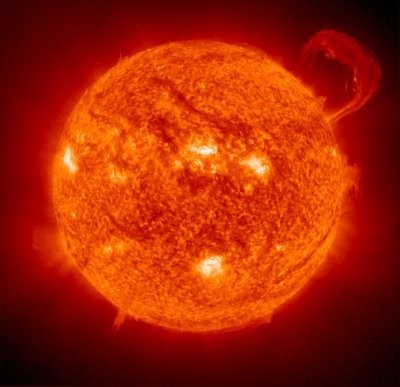 With the Bay Area conveniently located on the West Coast, astronomical neophytes and curious minds will have an opportunity to view an annular eclipse of the sun late Sunday afternoon–fog permitting.
With the Bay Area conveniently located on the West Coast, astronomical neophytes and curious minds will have an opportunity to view an annular eclipse of the sun late Sunday afternoon–fog permitting.
The moon will partially block the sun on Sunday around 5:25 p.m. with the maximum eclipse at 6:32 p.m., according to astronomer Jonathan Braidman at Oakland’s Chabot Space and Science Center.
Since the moon is not quite large enough to completely block out the sun it leaves a ring, which according to Braidman, “doesn’t happen very often.”
In fact, the next total solar eclipse will be in 2023 and the next annular eclipse will happen again in 2030 and then again in 2048, according to Braidman.
The last annular eclipse was in 1994 but was not visible from the Bay Area.
During a total solar eclipse viewers can see the corona, or crown, of the sun while during Sunday’s eclipse a thicker ring will be visible, but it will still be darker than usual.
Braidman said there will be interesting weather effects, especially for nocturnal animals, and there may be some interesting colors visible in the atmosphere.
The astronomer explained to have a solar eclipse the moon, sun, earth have to line up with moon in the middle.
The Bay Area is too far south to see a total ring, but only two hours north and especially near Eureka or Redding the entire circle around the moon should be visible, Braidman said.
The best way to look at the eclipse is to not look directly at it.
Braidman warns that onlookers can do some serious eye damage.
Viewers should use something like welder goggles, a pinhole camera or solar viewers, like those at Chabot’s observation deck.
The best views will be in the westward direction, as the sun will be close to setting. In the Bay Area head toward the coast and make sure no mountains or tall buildings are blocking the western skyline.
Other astronomical events viewable from the Bay Area in the coming weeks include a lunar eclipse on June 4. This is when the moon passes behind the Earth.
The eclipse will occur in the early morning between 2 a.m. and 5 a.m. and Chabot’s observatory deck will be open for viewing.
A once-in-a-lifetime event is also in the stars–literally. The transit of Venus is expected on June 5 between 3 p.m. and 10 p.m.
The entire seven-hour period is how long it takes for the planet Venus to pass in front of the sun. The next transit of the planet will be in 2117.
Chabot will also have a viewing event for that rare occurrence.
A spokesperson from the NASA Ames Research Center at Moffett Field in Mountain View said they are also planning a viewing for the upcoming rare Venus sighting.
The Peninsula Astronomical Society is planning a viewing for Sunday’s annular solar eclipse at the Foothill College observatory at 12345 El Monte Road in Los Altos Hills.
For more information about that viewing visit pastro.org.
In San Francisco the Golden Gate National Park Service is working with the California Academy of Sciences in front of the new Lands End visitors center to view the eclipse as it occurs at the ocean between 5:30 p.m. and 7:30 p.m.
In Marin County the National Park Service will be on Slacker Ridge between 5 p.m. and 7 p.m. with experts on hand to help photograph the phenomenon.
Oakland’s Chabot Space and Science Center is located at 10000 Skyline Blvd. in Oakland.
Sasha Lekach, Bay City News
Want more news, sent to your inbox every day? Then how about subscribing to our email newsletter? Here’s why we think you should. Come on, give it a try.









